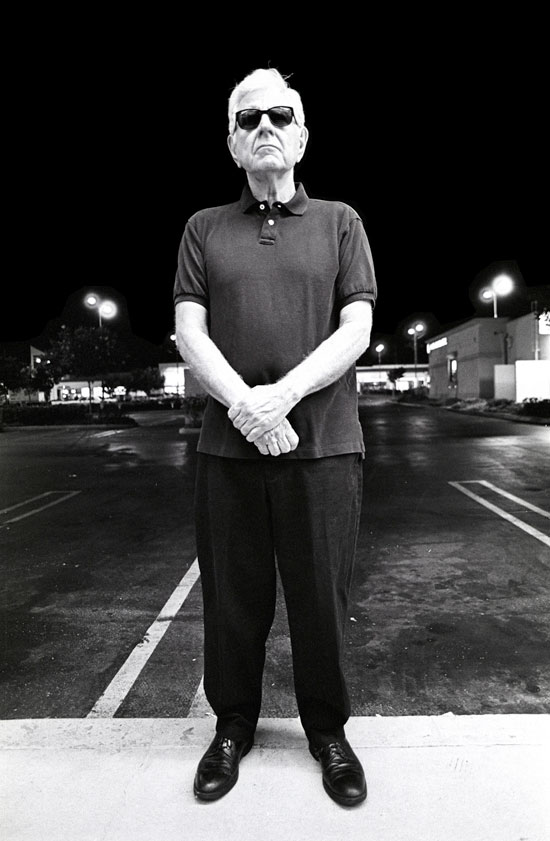CSUN Professor’s Photographs to Become Part of National Portrait Gallery and Autry Museum Permanent Collections

Rodolfo Acuña, Ph.D., Historian
from Chicano Male Unbonded series
©2000, Harry Gamboa Jr.
The Smithsonian’s National Portrait Gallery and the Autry Museum of the American West have acquired several photographs by California State University, Northridge Chicana/o studies professor Harry Gamboa Jr. for their permanent collections.
The photographs are from Gamboa’s acclaimed ongoing series, “Chicano Male Unbonded,” black-and-white portraits of more than 100 Latino males that call into question the assumptions and stereotypes society has of men of Mexican descent. Among the photographs going to the National Portrait Gallery is one of CSUN professor Rudolfo Acuña, a founder of CSUN’s Department of Chicana/o Studies who is often hailed as the “father” of the field of Chicana/o studies.
Gamboa, an internationally recognized artist who co-founded the pioneering Chicano art group Asco (Spanish for “nausea”) with Gronk, Willie F. Herrón III and Patssi Valdez, said given the current political climate, he was particularly moved that images from the “Chicano Male Unbounded” series were chosen for acquisition.
“I created this work as a way to counter the negative stereotypes people have of Chicano men,” he said. “They are all photographs of men I know on some personal level. Some I know from academia and the art world, others are family or friends. They all self-identify as being Chicano. It’s very interesting to stand back and listen as viewers speculate on who the men are. I’ve heard people comment, just from looking at the pictures, that they are gang members. But then they get closer, read the descriptions and discover that the ‘gang members’ are lawyers, Ph.Ds, artists and novelists.
“In these days, when political talk includes discussion about the mass deportation of Mexicans and Mexican males in particular are negatively portrayed, this work stands out,” Gamboa continued. “It provides a positive discussion about what these men could be and who they actually are and what they represent — pillars of not only Chicano culture, but American culture.”
Kim Sajet, director of the National Portrait Gallery, said the gallery aims “to interpret the American story through the people who made a contribution to its history.”
“Important to that effort is to represent achievements that often make a major impact in a specific field but receive little national recognition,” Sajet continued. “Harry Gamboa’s portrait of Rudolfo Acuña acknowledges how Chicana/o studies came into the modern university setting and has subsequently broadened the understanding of who we are as a people.”
W. Richard West, president and CEO of the Autry Museum, said his museum’s selection of works is based on criteria such as art historical significance and connection to the museum’s mission to bring together the stories of all peoples of the American West.
“Our acquisition of Harry Gamboa’s portraits — including those of Willie Herron and Louie Perez — contributes to our ability to present a more comprehensive narrative of the Chicano experience in Los Angeles,” West said. “We plan to exhibit the portraits in fall 2017 in tandem with an exhibition of photographs from ‘La Raza’ magazine as part of the Getty’s broader ‘Pacific Standard Time: LA/LA Initiative.’’

Willie Herrón, Artist/Musician, 2000
from Chicano Male Unbonded series
Autry Museum of the American West
©2000, Harry Gamboa Jr.
Amy Scott, the Autry’s chief curator and Marilyn B. and Calvin B. Gross Curator of Visual Arts, said Gamboa’s “Chicano Male Unbonded” series “sits at crossroads, between traditions of photographic portraiture and street performance, between self-styling and artistic presentation.”
“As a result, the series constitutes a versatile framework for reconsidering some of the many labels so often applied to men in the Chicano community or of Mexican descent,” Scott continued. “Autry visitors will have the opportunity to examine traditions of photographic portraiture relative to race and identity in Los Angeles, and the West at large.”
When Gamboa and his colleagues first hit the streets of Los Angeles more than 40 years ago with Asco, the community did not know what to make of its performance pieces, which tackled the day’s issues, including racism, head on.
The initial reaction to Asco’s work was resistant and political. Over the years, art collectors, museum curators and academics have hailed Asco and its members for presenting the realities of a community that was long ignored and provocatively translating the universality of its experience. The Smithsonian American Art Museum created a special exhibition in 2013 that includes their work, “Our America: The Latino Presence in American Art.” The exhibition is currently on display at the Delaware Art Museum.
For the past four decades, Gamboa has documented and interpreted the contemporary urban Chicano experience through his art, whether in photographs, videos or performance pieces.
Last year, the Whitney Museum of American Art in New York featured pieces by Gamboa from its permanent collection as part of its opening celebration of its new home in Manhattan’s Meatpacking District. Some of those pieces will be on display later this month as part of the Whitney’s new exhibition “Human Interest: Portraits from the Whitney’s Collection,” which is scheduled to run from April 27, 2016 to Feb. 12, 2017.
Gamboa’s work has been exhibited in museums around the world. Despite the international acclaim for his work, Gamboa continues to teach four classes in CSUN’s Department of Chicana/o Studies and is a faculty member in the photography and media program at California Institute of the Arts.

 experience
experience